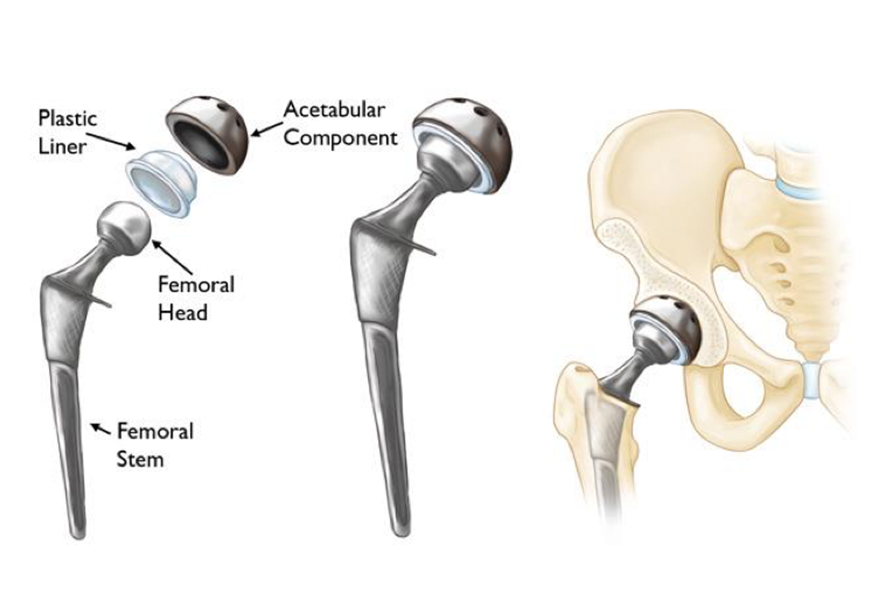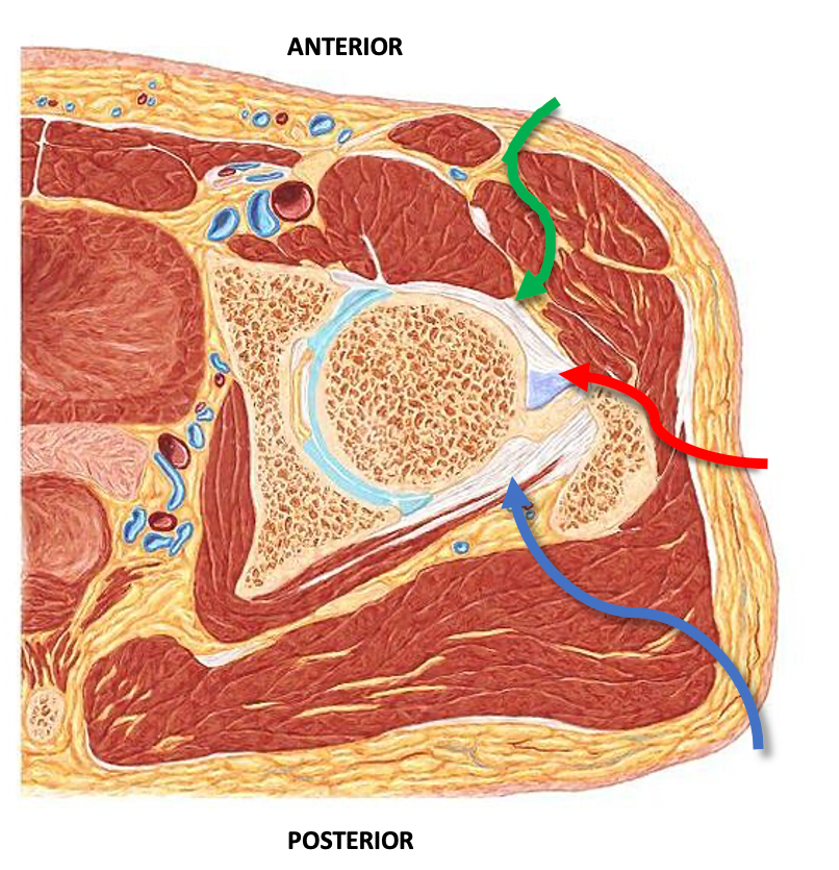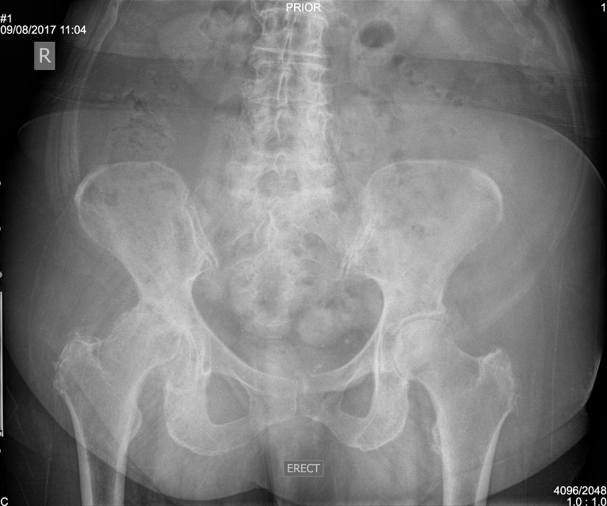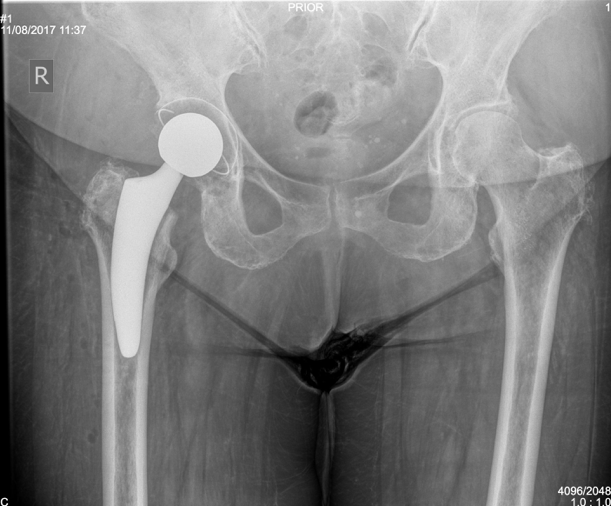Click on the links below to find out more about
Direct Anterior/Bikini Total Hip Replacement Surgery
Click on the links below to find out more about
Direct Anterior/Bikini Total Hip Replacement Surgery
OVERVIEW
If you suffer from severe osteoarthritis, rheumatoid arthritis, or hip fractures, it can cause pain, stiffness, and lack of mobility. Some experience this in one side of their body, whilst others may find the damage is in both hips.
Double hip replacement – or bilateral hip replacement – surgery means you’ll have an operation on both hips. During the surgery, the damaged hip joints are removed and then replaced with prosthetic implants. By removing the cause of your pain, double hip replacement surgery will allow you to increase your range of motion and enjoy a better quality of life. READ MORE
Undergoing a double hip replacement is a serious decision. But knowing you’re in the hands of an experienced surgeon makes all the difference. Dr David Slattery has trained alongside hip replacement experts in Europe and Australia. He has operated on many patients and has become renowned in the field for his work.
Knowing what to expect during and after the surgery is very important. Dr Slattery provides consultations and will discuss the details of your surgery with you before any surgery takes place. This is to ensure you are fully informed and can make the best decision for your health.
The damaged or diseased bone that has been causing you agony and misery will be removed. The ball at the top of your femur will be replaced with a metal or ceramic implant, while the socket (acetabulum) will be replaced with a prosthetic cup. These are shaped to ensure a perfect fit, allowing them to mimic the natural ball-and-socket joint.
Dr David Slattery is skilled and experienced in both posterior and anterior surgical methods. Wherever possible, Dr Slattery favours the anterior procedure due to the reduced trauma to surrounding muscle and tissue. The anterior method of surgery involves operating from the front of your hip, so the surgeon can move the muscles and operate through them, rather than cutting through them.
As a result, anterior surgery involves reduced healing and recovery time.
There is no set recovery period after a hip replacement, it varies from person to person. Factors that contribute to the length of recovery include pre-surgery health and fitness, age, and pre-existing conditions, amongst others.
The recovery time for having a bilateral/double hip replacement is quicker than having both hips replaced separately.
After your hip surgery, you will be referred to rehabilitation, or physiotherapy, depending on the circumstances. You’ll also have a post-op consultation with Dr Slattery during which time you can raise any questions you may have.
Dr David Slattery is extensively trained in hip surgery and has conducted many operations just like this. He specialises in anterior (minimally invasive) hip replacement surgeries. Alongside hip replacements, his specialities also include being a pelvic and knee specialist in Melbourne. His work has earned him a fellowship with the Royal Australian College of Surgeons and the Australian Orthopaedic Association. with an extensive list of prestigious workplaces and training locations, your health is in safe hands with Dr Slattery.
If you’re tired of being in pain all day and suffer from hip joint problems, you can book a consultation today. We offer an online booking system that you can access at any time, or if you prefer, you can call one of Dr Slattery’s consulting locations in Melbourne. READ LESS
There are normally four components to a total hip replacement:
A standard hip replacement in Australia refers to a hip replacement performed using an incision over the side of the hip with access to the hip joint from the back (posterior). It involves splitting various muscles to gain access to the hip joint. It offers excellent exposure of the hip, and is routinely done across Australia. Variations of this “standard” approach practiced by Australian surgeons are the Direct Superior Approach (DSA), and SuperPATH® hip replacement techniques, which still cut varying amounts of muscle tissue.


An anterior hip replacement is a hip replacement from the front of the hip, which involves an incision in the groin as opposed to the side. This approach for hip replacement was originally described in Europe, and has gained popularity in the United States. More recently it has gained popularity in Australia.
Dr Slattery uses either a cosmetic, or bikini, incision in the groin crease or an oblique incision which results in a small scar in the groin approximately 8-10cm long in most cases. The operation goes between muscles rather than cutting through them, which reduces the amount of trauma to the soft tissues and preserves the normal anatomy. The goals of anterior hip replacement are:
FAQs for hip replacement surgery
Should I have a hip replacement?
There are many things to consider when making a decision to undergo hip replacement surgery. It could ultimately give you relief from chronic pain and suffering, but there could also be an alternative. It is always best to be armed with plenty of questions ahead of your initial consultation with your hip replacement specialist.
What is the recovery time on an anterior hip replacement surgery?
Most patients are sitting out of bed or standing on the first day after surgery. Some patients are able to walk and can be safely discharged home in 36-72hrs. Usually patients will resume most normal activities within 3 – 6 weeks of their total hip replacement surgery. Once activity is possible with minimal pain, physical therapy and light exercise will be important to incorporate as a way to help recovery.
What are the complications with anterior hip replacement surgery?
This type of surgery is considered safe and is highly effective for patients who require it. With any surgery there can be complications and for hip surgery you may encounter the following:
Many steps are taken at each step of your operation to prevent complications occurring, and overall hip replacement is very safe and effective.
What can I expect after hip replacement surgery?
You will spend 2-3 days in hospital afterwards and be advised on how best to take care during the recovery period. Within the first few days you will be encouraged to walk with assistance from physiotherapy and nursing supports. Most patients do not need to go to inpatient rehabilitation post op unless they have significant medical co-morbidities or no supports at home.
Following surgery you will be required to avoid driving for approximately 2 weeks, possibly longer, depending on how quickly you regain confidence and coordination.
Ongoing pain from a hip replacement can be expected in the first few weeks. This should subside as your recovery time and postoperative physical therapy is undertaken.
What activities should I avoid after hip replacement surgery?
Patients should avoid driving for 2 weeks after hip replacement surgery (at a minimum). There are no other restrictions upon your activities after an anterior hip replacement.
Is hip replacement surgery safe?
Hip replacement surgery has a long proven safety record over many decades. With constant refinement techniques have become better to prevent short and long term problems. Advances in technique and materials have ensured that surgeries performed today are safer and deliver longer-lasting benefits to a greater number of patients than ever before. Dr Slattery prioritises the safety of his patients at every step of their journey to health, ensuring that the risk of complications such as blood clots and nerve damage are minimised.
How long will my new joint last after hip replacement surgery?
New, stronger artificial joints and improvements in implant delivery and placement mean that more than 85% of all hip joint implants will last 20 years without revision.


Dr Slattery is a hip replacement specialist located in Melbourne and has learnt the intricacies of Direct Anterior Total Hip Replacement surgery in both Switzerland and Australia from world leaders in this technique. Additionally, he provides hip replacement keyhole surgery (arthroscopy) where suitable for patients. He now has a number of total hip replacement consulting rooms across Melbourne.
Patient selection is extremely important in ensuring that you get the best outcome from your hip replacement surgery. Dr Slattery will assess you individually and discuss the best option for you during your consultation.
To book a consultation with Dr Slattery, a hip replacement specialist in Melbourne, please contact one of his rooms listed here, or by using our online contact form.

Dr David Slattery is an orthopaedic surgeon based in Melbourne with over 10 years of experience, with a special focus on hip and knee joint preservation and replacement. With qualifications in both medicine and law, he brings a unique and comprehensive approach to patient care. His surgical techniques are minimally invasive and evidence-based, designed to reduce pain and enhance recovery.
Trained in leading institutions across Europe and the USA, Dr Slattery offers advanced treatments for a wide range of joint conditions. He is deeply committed to patient outcomes and takes pride in tailoring treatment plans to each individual. Whether you’re an athlete or seeking relief from chronic joint pain, his goal is to restore function and improve your quality of life.